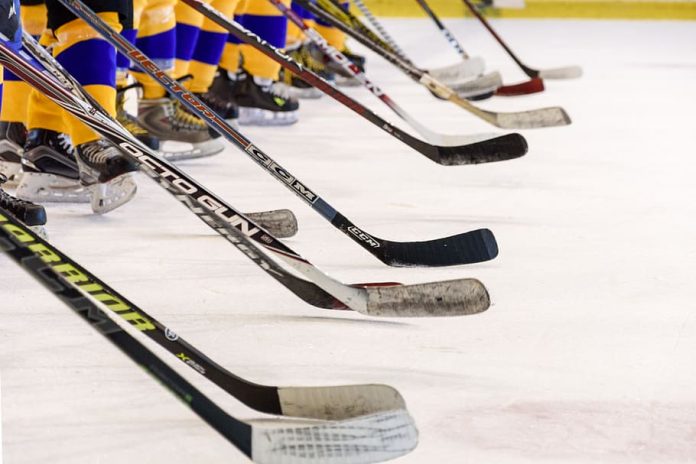
Founded in 1917, the National Hockey League (NHL) consists of 32 member clubs with players from over 20 countries. Ice hockey is a professional sport, and all teams compete for the historic Stanley Cup.
The regular season for NHL 2024 started in North America on October 8th and is scheduled to end on April 17th, 2025. Each team gets to have 82 regular season games, with 41 played at home and 41 outside.
Despite the anticipation and excitement, this ongoing season is also expected to see many minor and grave injuries. Who is to take the blame? In this article, we will discuss liability from the viewpoint of NHL ice hockey.
What Kinds of Injuries Are NHL Players Vulnerable To?
By its nature, ice hockey is a contact sport. This means physical contact between players is an acceptable part of the game. Other examples of contact sports include rugby, football, and boxing.
In such sports, the physical contact between players or the environment may be intentional or accidental. This is precisely why there is often a high risk of injury. As per some experts, the three most dangerous contact sports in terms of injuries include rugby, ice hockey, and football.
On-ice thuggery is not at all uncommon once the competitive spirit takes over a player. NHL players are vulnerable to suffering different kinds of injuries, some with immediate impact whereas others sustained over the years. Let’s look at the most common ones –
- Ankle sprain or ligament tears in that area are the most common injury. Given the game’s nature, it is expected that players will experience some degree of strain on their ankles. Symptoms may include swelling and tenderness.
- Concussions or brain trauma is the second most common injury in the NHL. The rate of concussions has only increased over the years. In many players, the symptoms are subtle but become more apparent after several games and similar blows to the head.
- Another injury that most commonly affects the forwards rather than the defensemen is a knee ligament tear.
- Shoulder dislocations are also fairly common due to the high-velocity impact of a fall, blow, or collision.
Assumption of Risk and Standard of Care
As we stated earlier, ice hockey is an aggressive contact sport. This means its players as well as spectators must expect some level of injuries.
Not every player may be so injured that they must excuse themselves from a particular season. However, all NHL players certainly get hurt in one way or another. Those who managed to participate in all of the team’s games were only not hurt to the extent that they had to take months off.
Each player assumes a degree of risk, knowing that they may get injured despite fair play. Even the participants’ families are required to sign waivers that acknowledge the potential dangers of the game. Moreover, all participants are required to wear the necessary protective gear.
However, another important element is a player’s standard of care. In other words, they must play the game correctly and fairly. One must not hit the other deliberately on the head or check from behind.
Essentially, the stick must never become a weapon to maliciously strike the puck at another player. Accidental hits do not count.
Outside the Bonds of Fair Play
The assumption of risk doctrine that we discussed in the previous section protects NHL players against legal liability within the bounds of fair play. It is possible for a game to take a more ‘out of the ordinary’ or malicious turn.
In such cases, the injured player is eligible for legal recourse. In any given scenario, there can be two main liable parties.
Individual Players
Now, NHL players are permitted to hit or even fight as a part of the game but they cannot do so using severe blows. A legal hit in any game refers to those targeted at the one in possession of the puck.
The purpose should be checking the opponent back into the boards. Any blows or hits to the body are acceptable as long as they are not too severe but the head must be avoided at all costs.
Illegal hits would include the use of excessive force or speed, head blows, and late hits. According to TorHoerman Law, an injured player can sue the liable one for any actions deemed inappropriate to the sport.
Another kind of hit can involve being struck by the puck. This often leads to injuries like contusions or lacerations. This type of hit was endured by Dylan Holloway of the St. Louis Blues in NHL 2024.
A riveting match was midway between the St. Louis Blues and Tampa Bay Lightning at the Ultimate Sports City’s Enterprise Center. The Blues’ forward was hit by a puck in the neck after which he felt lightheaded.
The game was stopped with the player being taken out of the stadium on a stretcher. Thankfully, Holloway felt better within 24 hours itself. This blow was purely accidental. Had it been deliberate and resulted in serious injuries, the player could have sued the Lightning forward, Nick Paul, with the help of a St. Louis personal injury lawyer.
The League
It is not unheard of for the NHL to face concussion lawsuits. The League established the National Hockey League and NHL Players Association (NHLPA) Concussion program in 1997.
Though the same was initially a research project, it is currently used to extend standard medical care. This may seem enough but is not in many cases.
The program has also actively taken part in educating players about the risks of repeated concussions. However, the aggressive nature of the sport and reported instances of violence say otherwise.
The pace of the game has become faster than ever and many players sue the League, particularly post-retirement. Some of the major allegations against the League include –
- A failure to warn about repeated concussions to the brain
- A failure to reduce the game’s pace and protect players from head trauma
- Promotion of gratuitous violence
- A lack of adequate care following any injuries
The League has often tried to bring up the assumption of risk as its appeal. That is all that we need to know.
Every year, the NHL inspires the young demographics to train themselves for ice hockey. According to Statista, over 42,000 ice hockey players were found across US high schools (2023-2024).
This figure saw an increase of 405 players compared to the previous year. The numbers could be higher in 2024. The game itself is exciting, provided participants do not engage in malicious or reckless behaviors.


![Sunday’s NHL Hockey Free Picks & Predictions [12/28/25]](https://ultimatecapper.com/wp-content/uploads/2025/10/connor-bedard-blackhawks-218x150.jpg)

